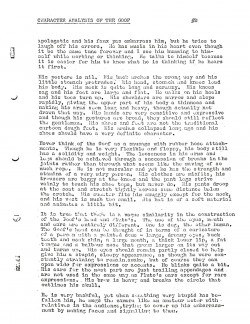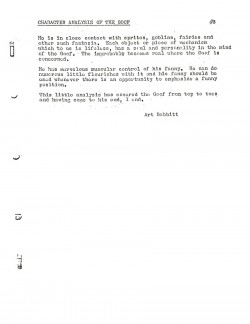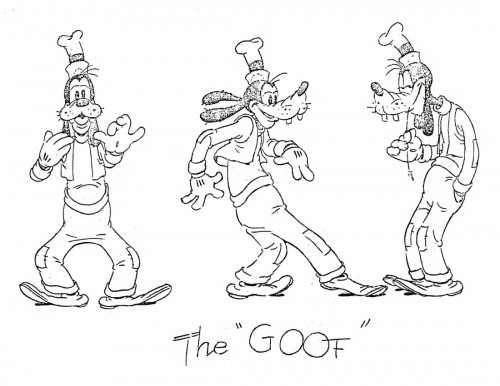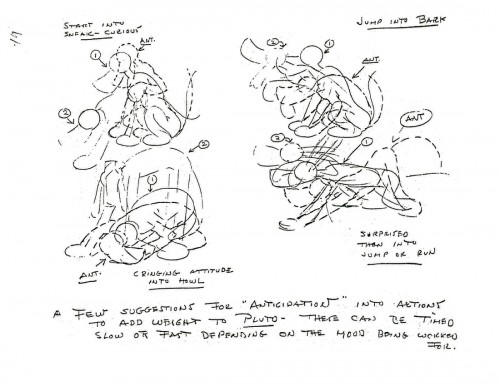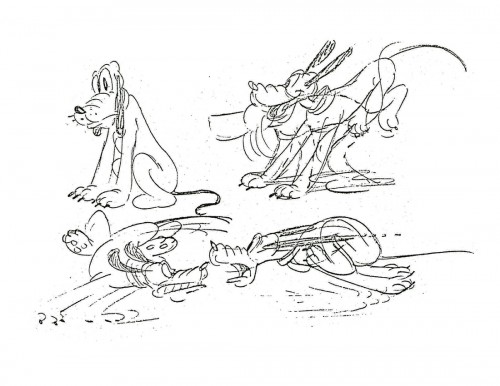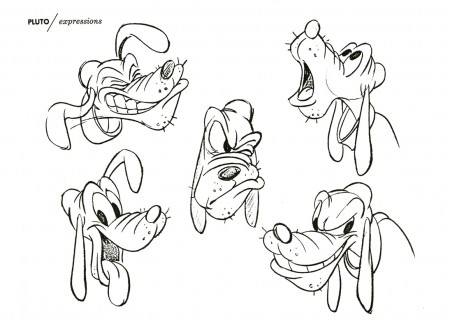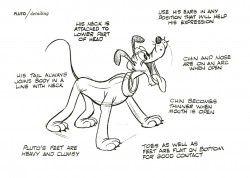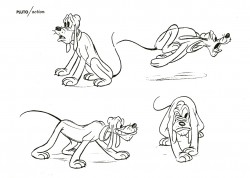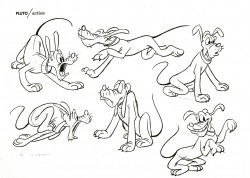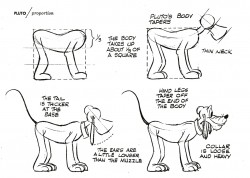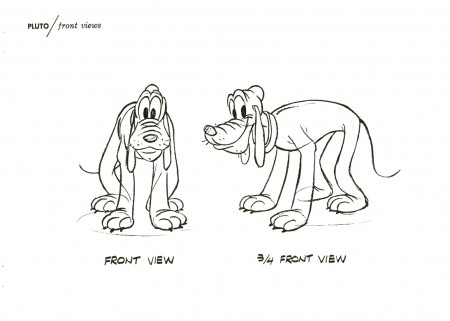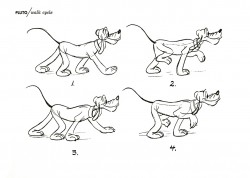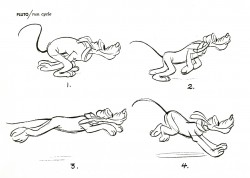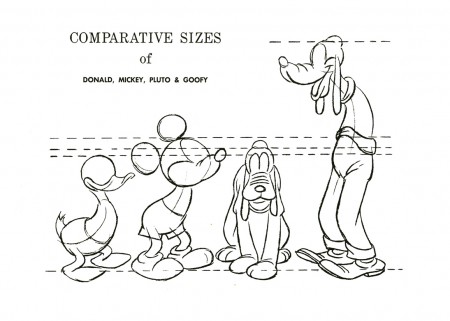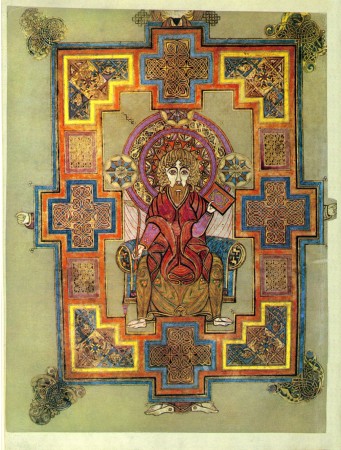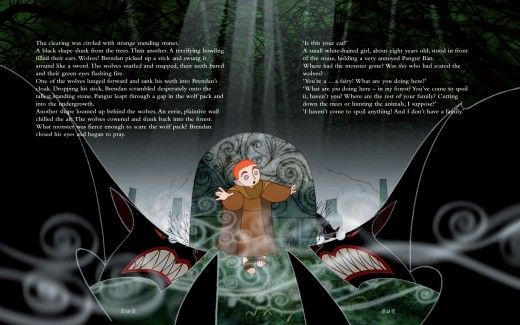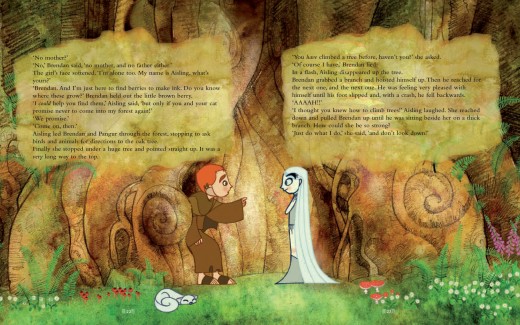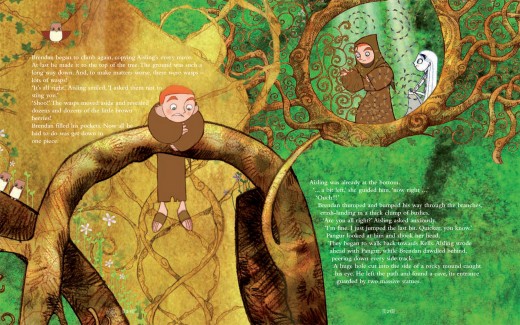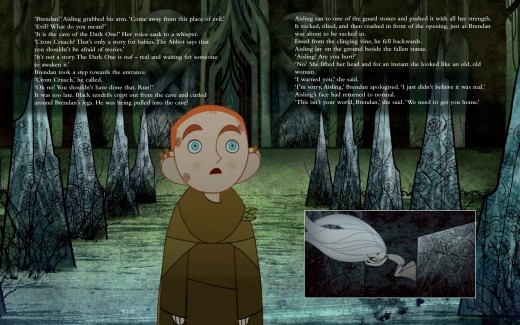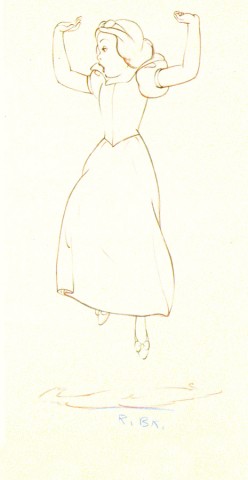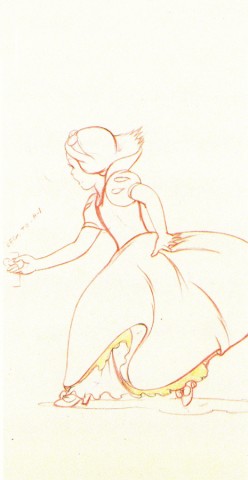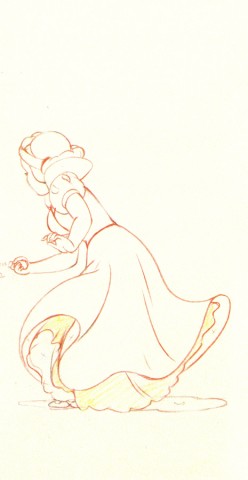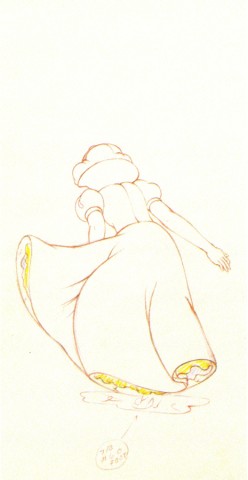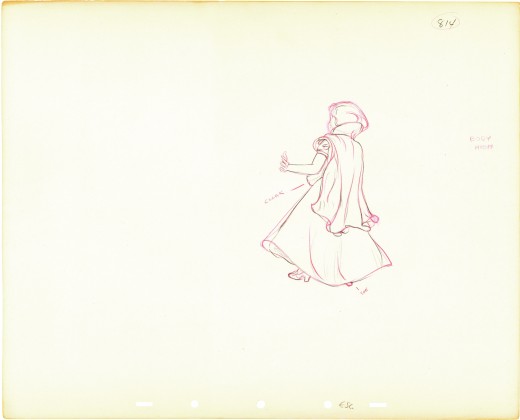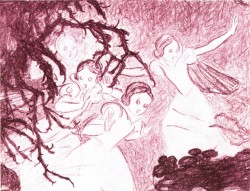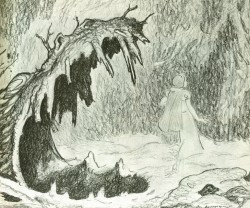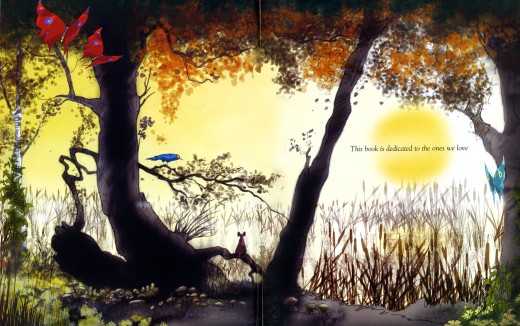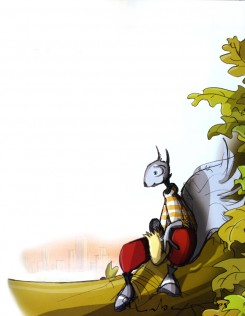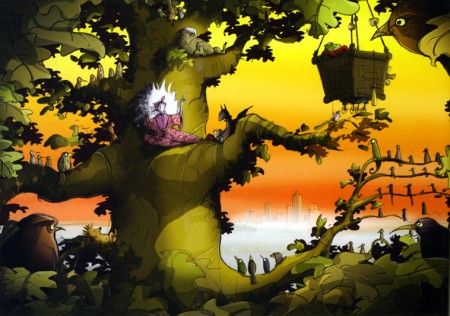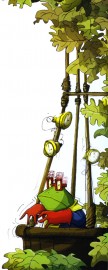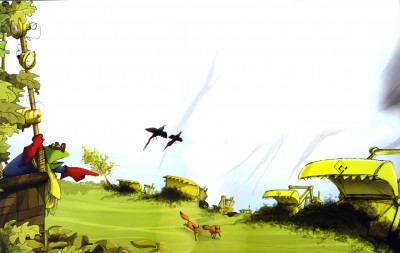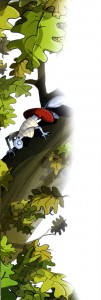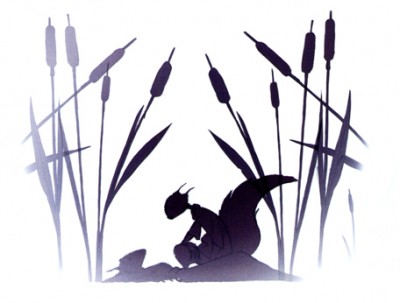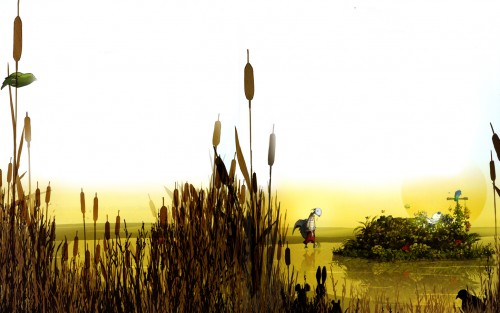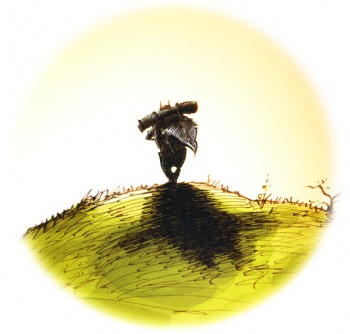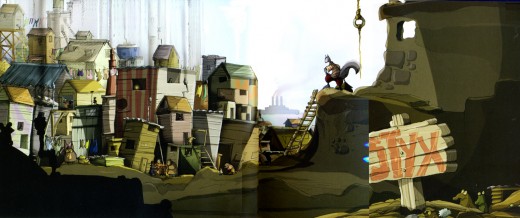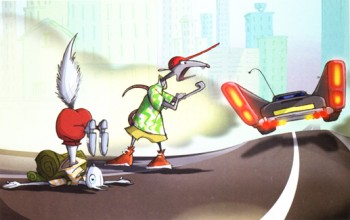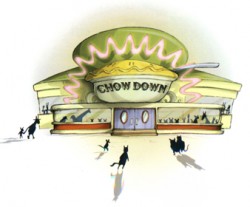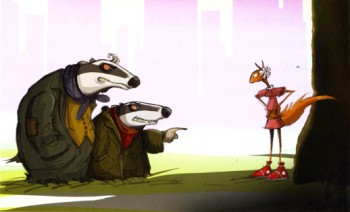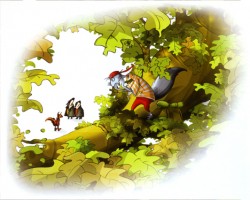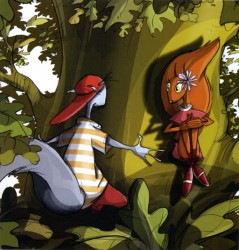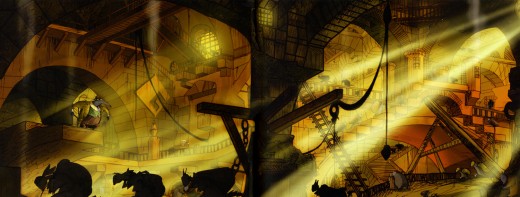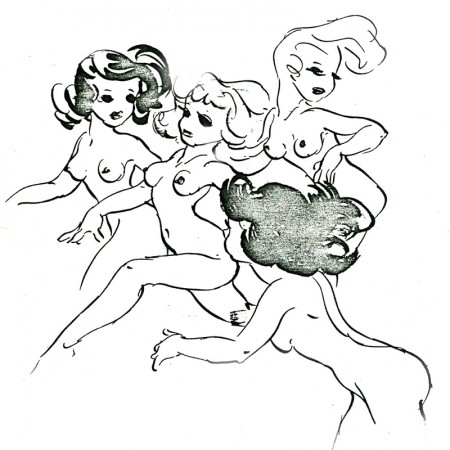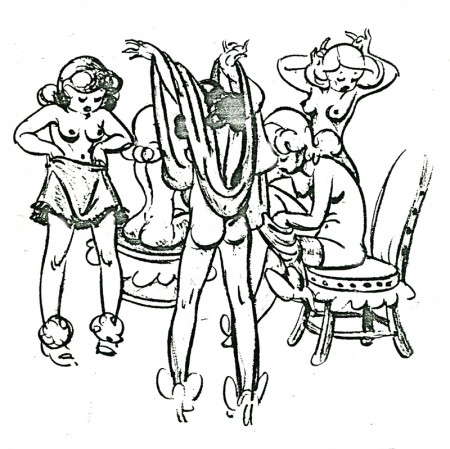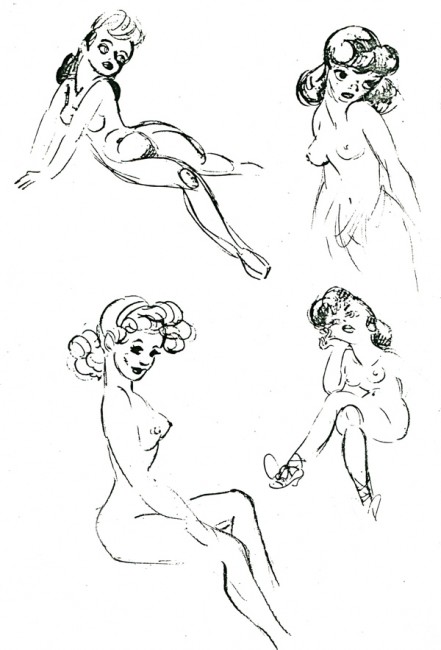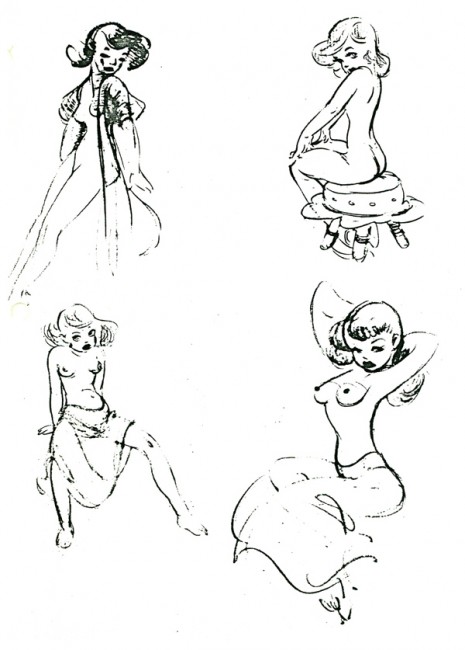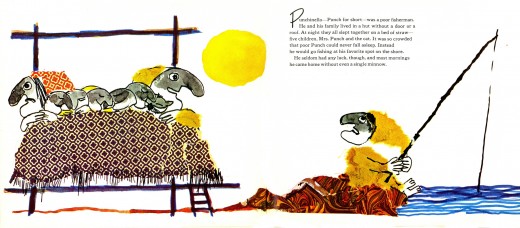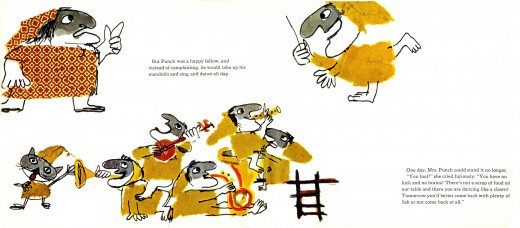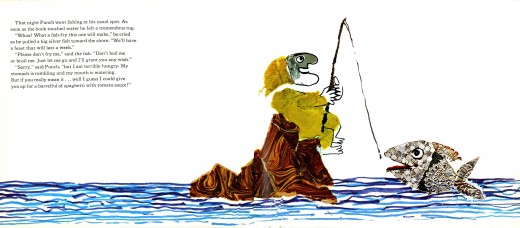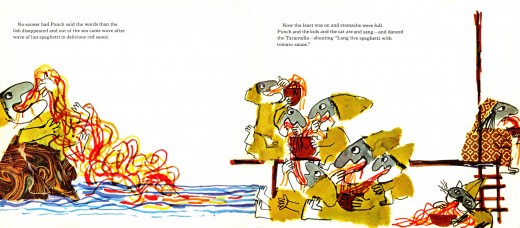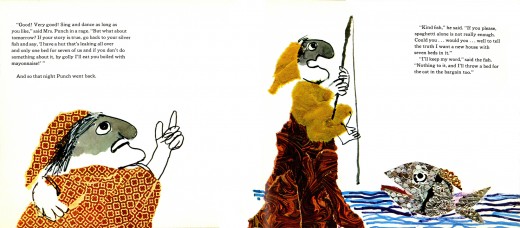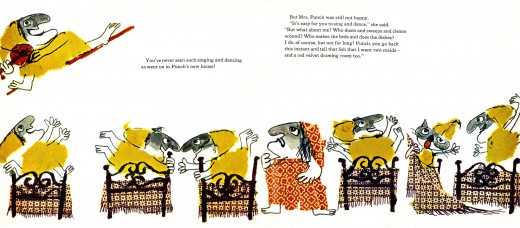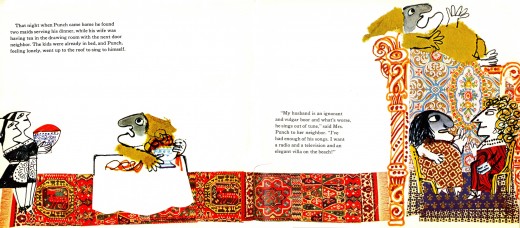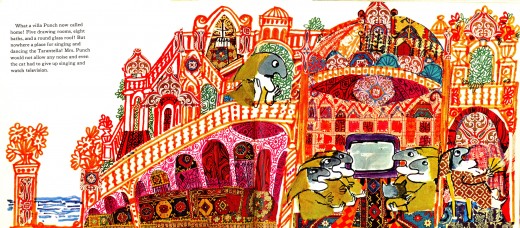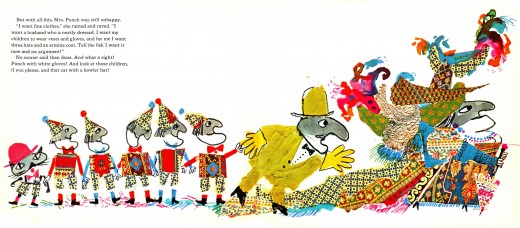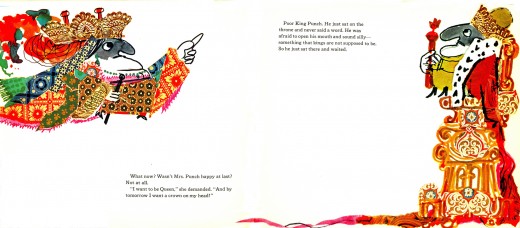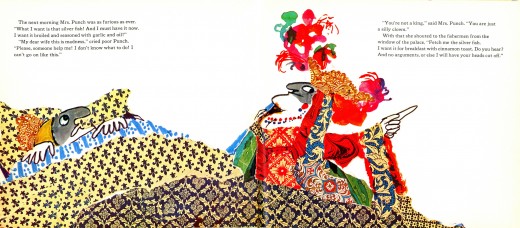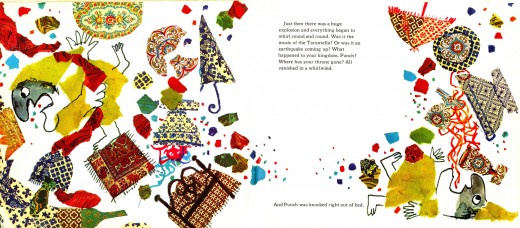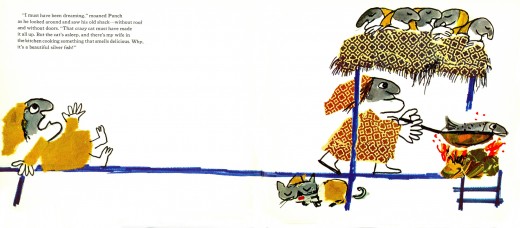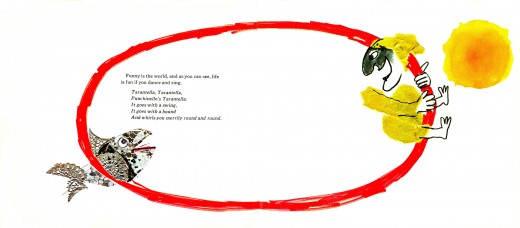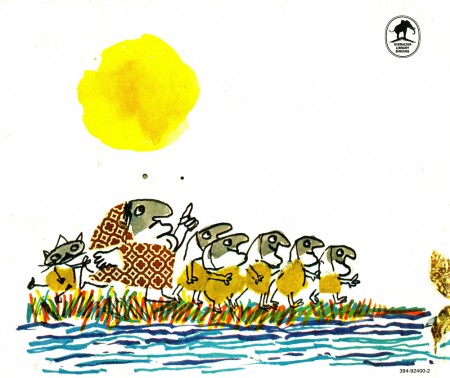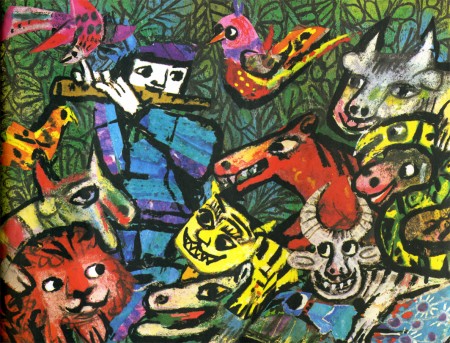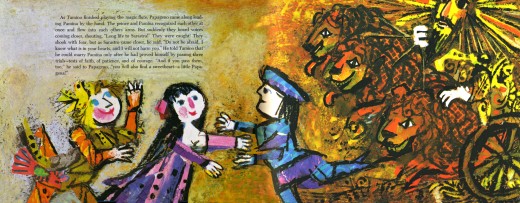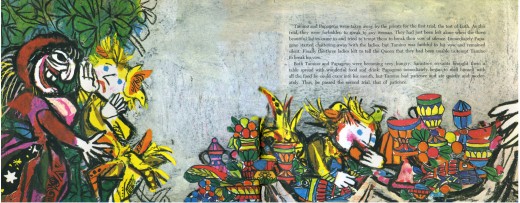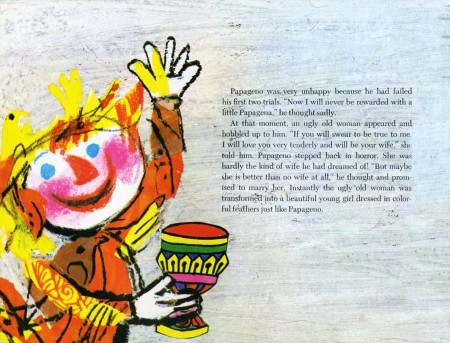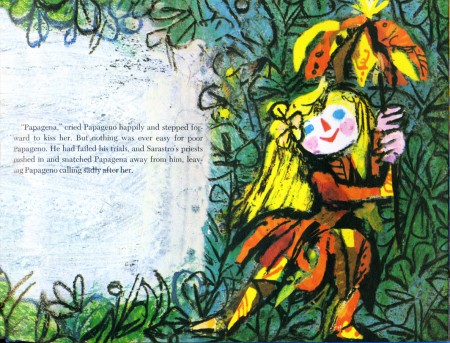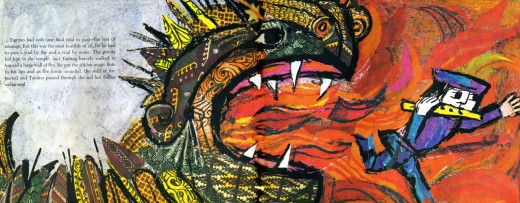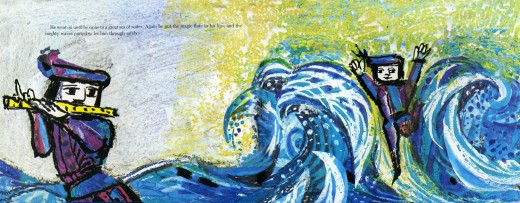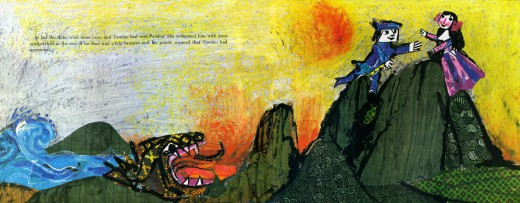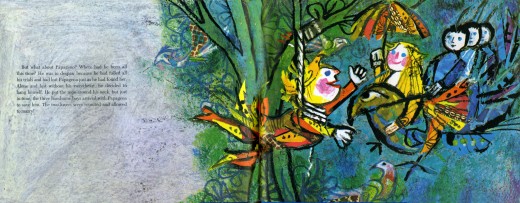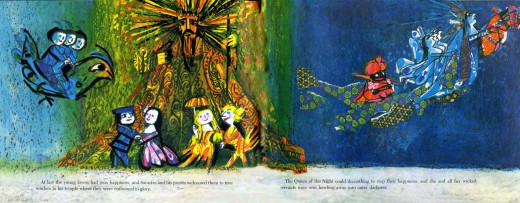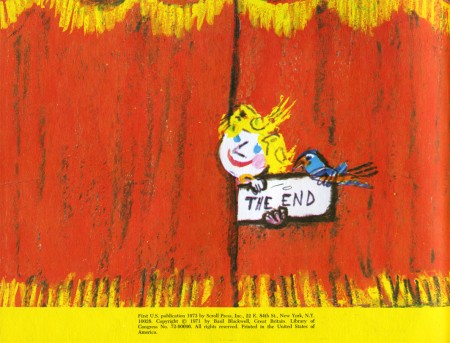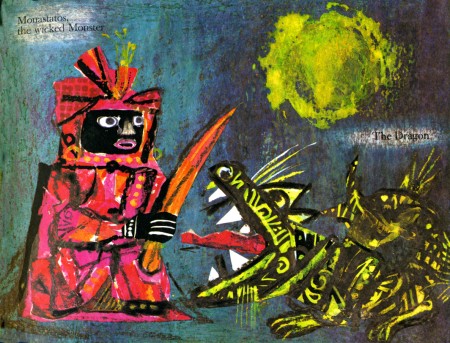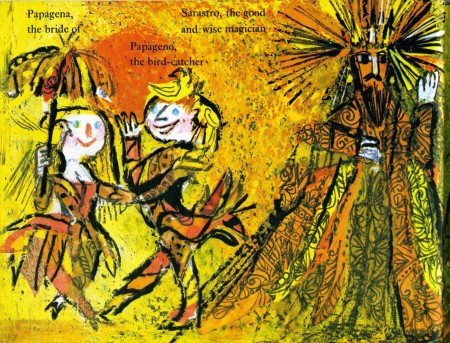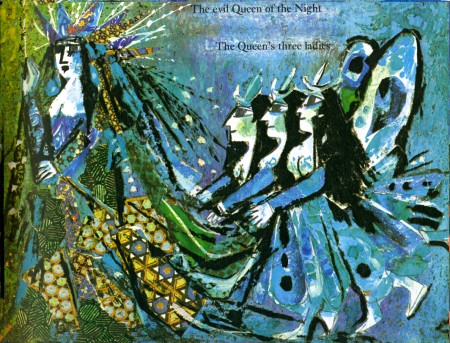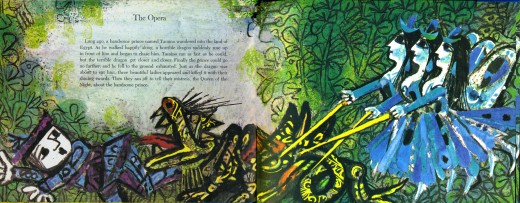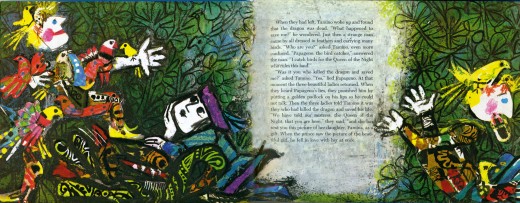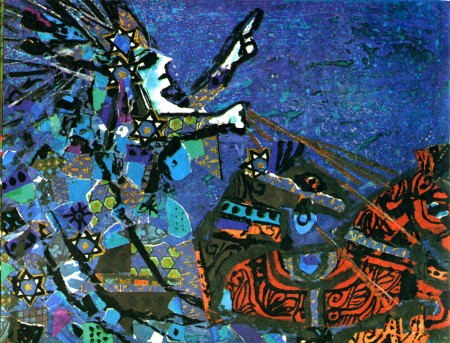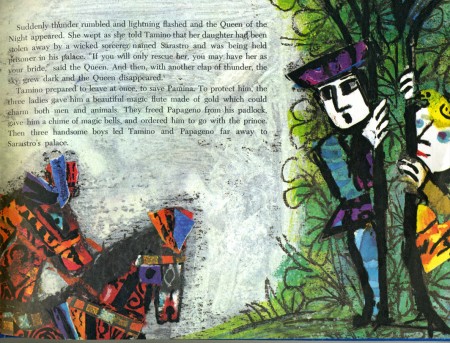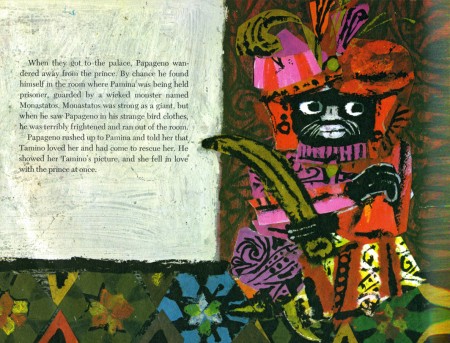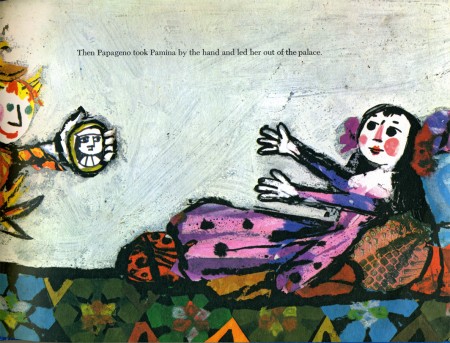Category ArchiveBooks
Articles on Animation &Books &Disney &Models 20 Jul 2009 07:21 am
Goofy/Pluto models
- I’ve recently posted some discussions about Mickey and Donald which were part of the extrawork courses that the Disney studio held in the Thirties. Go here to see Mickey, go here to see Donald.
Here’s the section on the “Goof” which also includes a couple of Pluto models.
Art Babbitt is the lecturer.
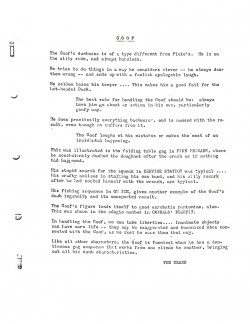 1
1 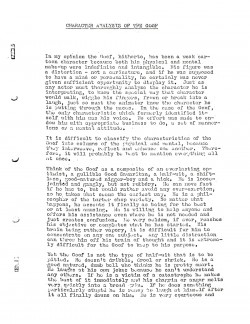 2
2(Click any image to enlarge.)
Since there were so few pages to the above document, I thought I’d add the pages of the How to Draw Pluto book which was part of the Disney Animation Kit you once could buy from the Art Corner at Disneyland. It included books on How to Draw Mickey, Donald, Goofy and Pluto as well as a book on Tips in Animation.
Here’s Pluto:
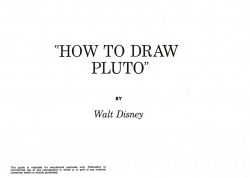 1
1 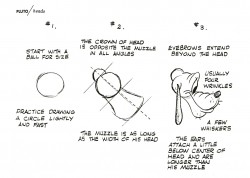 2
2
Books &Commentary &Independent Animation 19 Jul 2009 07:32 am
Book of Kells
- Having seen The Secret of Kells yesterday, I felt it was time to take another look at The Book of Kells. It’s been a while for me, though the book has been sitting on my shelves for the past 35 years or so.
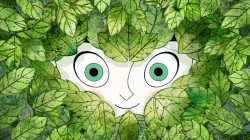 The artwork in the film is luxurious (although the characters tend toward the big-eyed cute side), but no matter how daring the style could have been, it didn’t quite match the absolute daring and drive of the original illustrations.
The artwork in the film is luxurious (although the characters tend toward the big-eyed cute side), but no matter how daring the style could have been, it didn’t quite match the absolute daring and drive of the original illustrations.
The Book of Kells is a hand written – drawn is actually the more appropriate word – transcription of the new testament. It was done by monks who might have spent an entire lifetime illustrating one page. The purpose was to save a written transcription of the Christ story despite the invasions of the Norse pagans.
This is essentally the story of the film, though the Christ-story part is left out. There is an 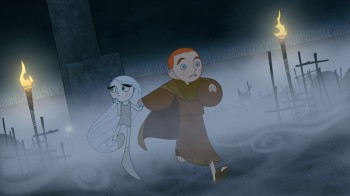 unusal mysticism within surrounding wooded areas in the film, but the mystical is left out of the Christian complex despite the fact that this is their primary mission.
unusal mysticism within surrounding wooded areas in the film, but the mystical is left out of the Christian complex despite the fact that this is their primary mission.
The most amazing part of the film is that it’s a telling of the story behind a work of Art. Of course, the monks didn’t think of it as art. To them it was just a telling of the Gospels. I’m not sure I can think of any other feature animated film that tries to relay the creation of an artwork.
I found the film beautiful, scene for scene, but felt there was, for me, no emotional connection. I might have preferred the film set in a slightly more realistic setting to separate the world of the gospels and spirituality from the real world. Others I spoke with didn’t have that reaction, so it’s no doubt my problem.
The film does feel, at times, a bit like Gennady Tarkovsky’s Samurai Jack (or, for that
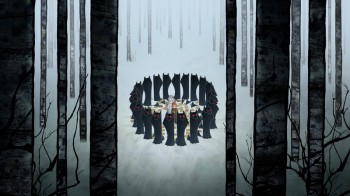 matter, Mr. Magoo’s Christmas Carol) and is undoubtedly a virtuoso performance of flat animation. It seems to mix traditional with Flash with CGI for the end product. Some CG scenes of waves washing on the shore were beautifully constructed. Scenes of the dark, heathen woods were also beautiful.
matter, Mr. Magoo’s Christmas Carol) and is undoubtedly a virtuoso performance of flat animation. It seems to mix traditional with Flash with CGI for the end product. Some CG scenes of waves washing on the shore were beautifully constructed. Scenes of the dark, heathen woods were also beautiful.
However, it’s all very heavy design all the time. In fact the design seems to resolve some of the conflicts that occur in the film. At least, I wasn’t able to quite get what happened several times, except that the climaxes were waved over the abstractions of some of the scenes and everything was taken care of. It did seem to work, in a not very physical way. I’m not sure how much our predecessors, in the animation industry, would have accepted it. Not quite as satisfying as actually being able to defeat the enemies (except in an allegorical way) though even the visualization of the enemy wasn’t quite physical enough for my taste – given that so much of their art went into the Book of Kells, itself.
The film, unlike most recent animated films (Miyazaki excluded) has a sense of depth that is quite comforting to see again. I’d recommend it wholeheartedly to anyone despite my few gripes.
My guess is that it will get a larger release this year. They’ve just gained a distributor and there is that Buena Vista logo at the head of the movie. Hopefully it’ll show up at Oscar time.
Now to some of those illustrations from The Book of Kells:
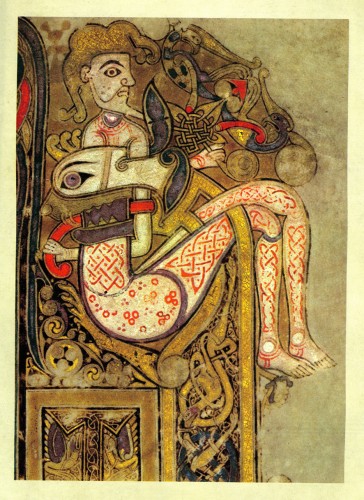
(Click any image to enlarge.)
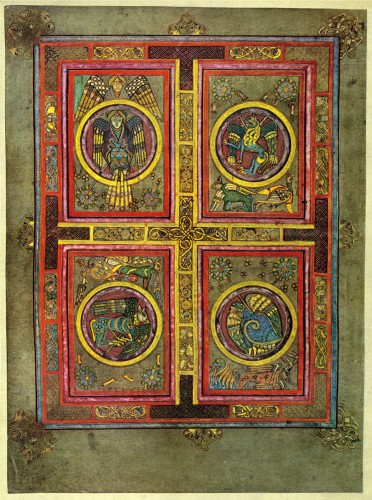
Of course, the four Evangelists, who wrote the gospels,
are depicted throughout The Book of Kells.
A man, a lion, a calf and an eagle.
John, Luke, Mark and Matthew
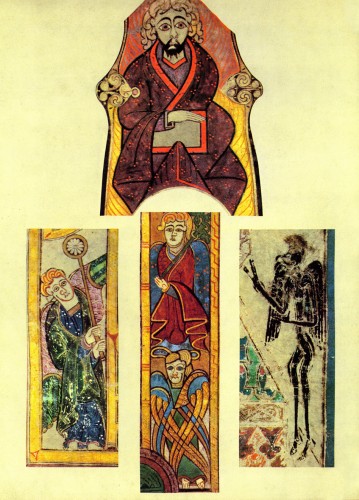
The design is quite extraordinary and should have inspired
many a modern work of art.
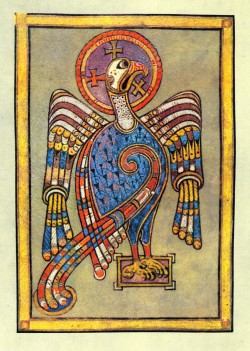
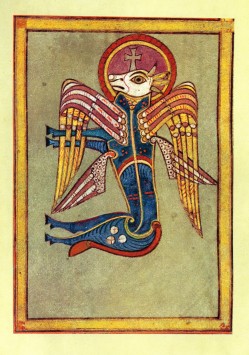
The Evangelists, again.
Matthew and Mark.
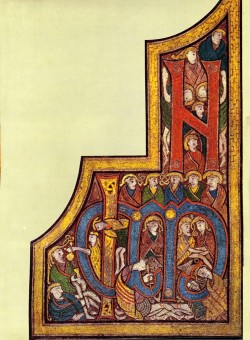
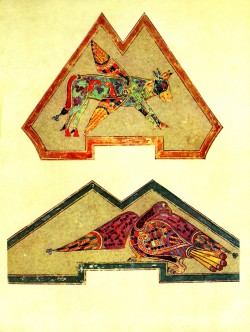
The book, for the most part, is a written manuscript of the Gospels.
Plenty of little and beautiful iconic figures wrap around and within the
hand-drawn type.
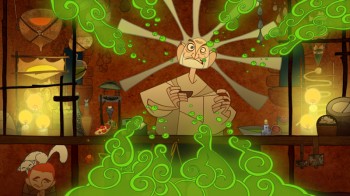
How could I resist adding this still from the film?
Books &Daily post &Independent Animation 18 Jul 2009 07:40 am
Kells
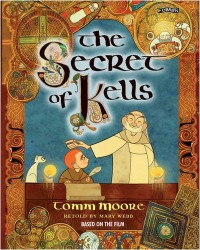 - This morning in New York, Tomm Moore’s The Secret of Kells will be playing the first of two shows at the IFC Center. The second show is tomorrow, Sunday, at 11am. (Reserve a ticket for that show here.) I intend to be at the screening this morning and maybe later in the day I’ll add some comments to this post about my thoughts on the film. I’m hoping it’ll be good, though I have to admit that I have some trepidations with the character design. A bit too cute for my taste, but I can’t judge until I properly see the film. The overall production design looks impressive.
- This morning in New York, Tomm Moore’s The Secret of Kells will be playing the first of two shows at the IFC Center. The second show is tomorrow, Sunday, at 11am. (Reserve a ticket for that show here.) I intend to be at the screening this morning and maybe later in the day I’ll add some comments to this post about my thoughts on the film. I’m hoping it’ll be good, though I have to admit that I have some trepidations with the character design. A bit too cute for my taste, but I can’t judge until I properly see the film. The overall production design looks impressive.
You can read the NYTimes review here. They’ve given the task to a second-string reviewer and treat it as a children’s film despite how positive the review is. At least the paper gave it some attention.
For now, I’ve noticed that a picture book of the film is available. On the site, they’ve given a couple of the double page spreads to check out. I’ve copied them below to give you an idea of this book, which looks as impressive as the film.
The book sells at this site for £12.99 (about $25.00); the same book on Amazon is selling for $125.00. They’ve also posted the trailer for the film at the book’s site, so it’s worth a visit.
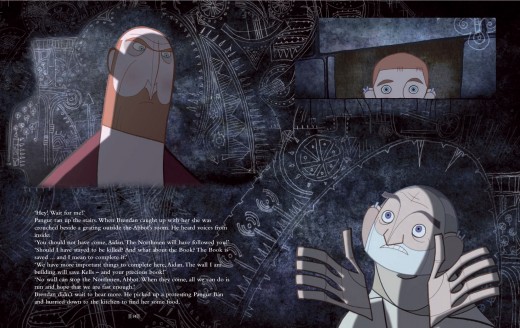
(Click any image to enlarge.)
Animation Artifacts &Books &Disney 14 Jul 2009 07:39 am
Snow White drawing
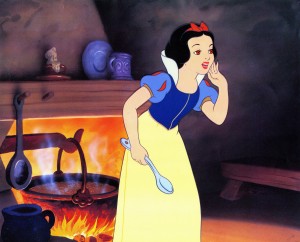 - This past week I bought an inexpensive drawing on e-bay. I wondered why no one else had bid on it. The drawing was a little rough of Snow White. Regardless I got it and continued to wonder about it.
- This past week I bought an inexpensive drawing on e-bay. I wondered why no one else had bid on it. The drawing was a little rough of Snow White. Regardless I got it and continued to wonder about it.
I scanned through John Canemaker‘s wonderful book, Treasures of Disney Animation Art. Lo and Behold there were some other drawings of Snow White, and it was obvious that the same artist had drawn them, Jack Cutting.
The drawings in the book show a short piece that was cut from the film, the soup eating scene. Snow White realizes the soup is boiling over, jumps in a turn and runs back to the pot.
These are the six drawings John includes:
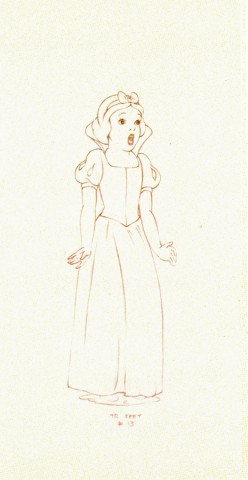 1
1 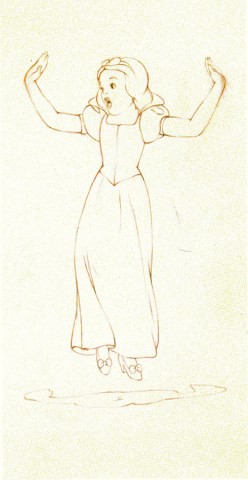 2
2(Click any image to enlarge.)
Here’s the drawing I just bought, which seems a bit more rough than the others. In all other aspects it looks similar, and the handwriting on the drawing matches those in the Canemaker book.
Of course, it might be the work of an inbetweener. The tentative numbers and the tentative fingers make me think it might be so. However, the drawings are clean over rough, which is not likely something an inbetweener would do. (Perhaps an overconfident one.) Regardless, I’m happy to have it. At first I thought the drawing came from the sequence where Snow White is running from the hunter into the deep dark woods.
But looking a little closer, it seems to be part of the animals pulling Snow White to the dwarfs’ cottage. This frame grab was the closest I’d gotten. My drawing is obviously a rough (what they call in NY, a clean-rough. Meaning the animator worked clean.) Obviously the assistant pulled it together for the scene.
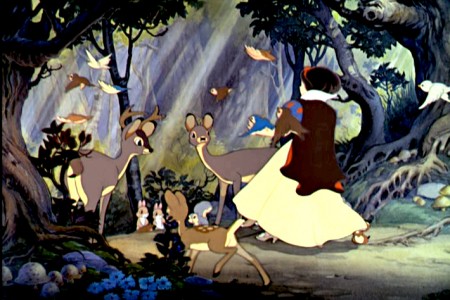
You’ve gotta love animation.
Books &Illustration 23 Jun 2009 08:08 am
High in the Clouds
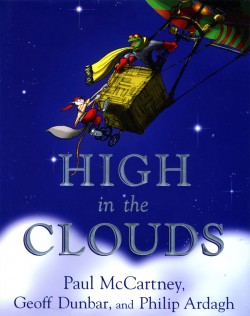 - A bit of news broke; when it was reported in Variety that Paul McCartney would be the force behind a new animated feature, High in the Clouds.
- A bit of news broke; when it was reported in Variety that Paul McCartney would be the force behind a new animated feature, High in the Clouds.
This work was a book he wrote with Geoff Dunbar and Philip Ardagh, and it was published in 2005 by Dutton. All three are given equal credit. Dunbar is an extraordinarily gifted animator/director in London. His animated short, Lautrec, as well as the animated version of the Alfred Jarry play, Ubu, helped to lead Britain to the animation renaissance of the 70′s. He also made the film, Rupert and the Frog Song, with McCartney. Ardagh is a children’s book writer with some 60 titles to his credit.
There can be no doubt that Ardgh did most of the writing, and Dunbar did the illustrations to the book.
The surprise to me is that Rob Minkoff was hired to direct the feature. He’s talented, but Dunbar had an obvious connection, and I’m surprised he did not get the job. Some obvious behind the scenes mechanics must obviously have been in play.
Caroline Thompson who wrote Edward Scissorhands, The Corpse Bride and The Secret Garden is a wonderful choice to write the script. It’s also interesting that Bob Shaye and Michael Lynne, formerly of the studio New Line Features, are producing this film with their newly devised Unique Pictures.
My hope and my fear is that Minkoff will make it look more like The Lion King and less like Stuart Little.
I bought the book a while back. Let me share some of Dunbar’s illustrations with you.
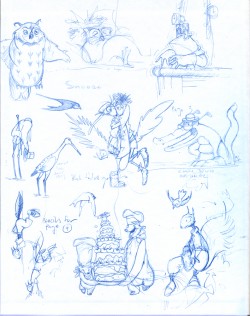
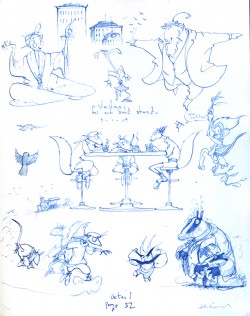
Inner covers
Some of these are exquisite, some not so. The character desing is pure Geoff Dunbar. (Not too distant from Paul Vester’s work.) I’m not a big fan of the stretched out characters. I like the roundness of the earlier years and think this project might’ve profited with that look.
It feels a bit like a modern take on the Wind in the Willows territory.
(More to come.)
Animation Artifacts &Books &Disney 07 May 2009 07:54 am
Kinney Writes about Moore
- Since I posted a piece about Jack Kinney yesterday, I thought I’d add this to the mix. In an early version of his book, Walt Disney and Other Characters, Jack Kinney wrote this:
The little gentleman, Freddie Moore, also took a poke at Roy during a friendly game of volley ball. Fred was a very co-ordinated guy. He drew as easily as breathing, and as the saying goes “He could draw his ass”. A very high compliment.
I saved a few of his originals:
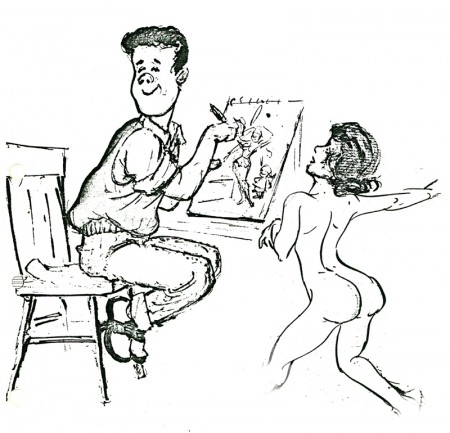
(Click any image to enlarge.)
- Fred and Fergie did all of the animation on the “THREE LITTLE PIGS”. Fred did the three pigs and Fergie drew the big bad wolf.
It was a sensation and introduced “Whose Afraid of the Big Bad Wolf” written by Ted Sears and Frank Churchill,
It was the song hit of the Depression. Burt Gillett directed.
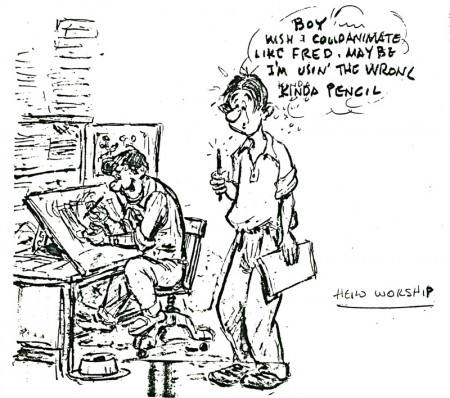
Art Babbitt, among others, might have argued with Jack Kinney’s allotment of all the animation to Fred Moore & Norm Ferguson.
By the way, these pages are xeroxes of xeroxes. Excuse the quality but enjoy the drawing.
Books &Illustration &Luzzati & Gianini 29 Apr 2009 07:42 am
Luzzati’s Magic Fish
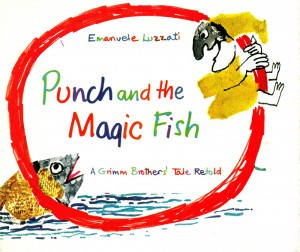 - Last week I posted a book byEmauele Luzzati, The Magic Flute. (Part 1, Part 2)
- Last week I posted a book byEmauele Luzzati, The Magic Flute. (Part 1, Part 2)
This was an adaptation of the feature film he did with Giulio Gianini. Luzzati also did a number of other children’s books (aside from all the animated films, as well as the theater and opera designs he did). None, that I know of, were pure adaptations of his film work. However, he did build on the character Pulcinello (Punch) to develop his story around Grimm tales.
Here’s a version of Punch and the Magic Fish, first published in English in 1972.
Most of the book is done as two-page spreads. I didn’t separate them. As with his past work, Luzzati uses a lot of mixed media. It looks like marker was the primary tool he used.
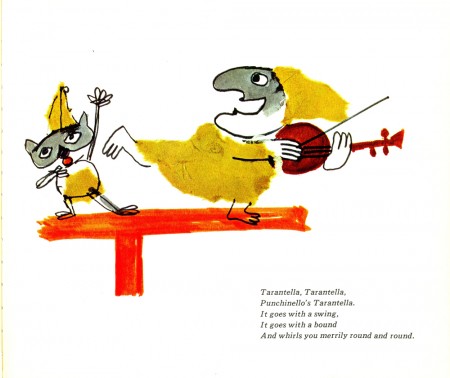 pg 1
pg 1(Click any image to enlarge.)
Books &Illustration &Luzzati & Gianini 17 Apr 2009 07:51 am
The Magic Flute – 2
- This post concludes the images from The Magic Flute, a book by Emauele Luzzati. The illustrations are reworked sketches and drawings done for the animated feature he did with animator, Giulio Gianini in 1978.
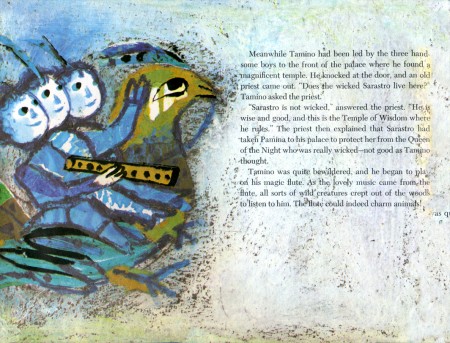 13
13(Click any image you’d like to enlarge.)
Books &Illustration &Luzzati & Gianini 16 Apr 2009 08:06 am
The Magic Flute – 1
- Emanuele Luzzati teamed with animator Giulio Gianini many times to produce some of the most beautiful films of the 60s & 70s. Their feature version of The Magic Flute completed in 1978 was also adapted into a book by Luzzati. He’d done the sets and costumes for a version of the opera in 1963.
The film didn’t get the attention it deserved, and it remains hard to locate. A small snippet is incorporated into a video on YouTube. (The animation doesn’t come on until about a minute of the piece.)
I originally saw the film when it once aired on local WNET (PBS station). It wasn’t repeated and video wasn’t available back then. However, I do have the children’s book which Luzzati published from his designs for the animation.
Here are the first half of the illustrations in the book.
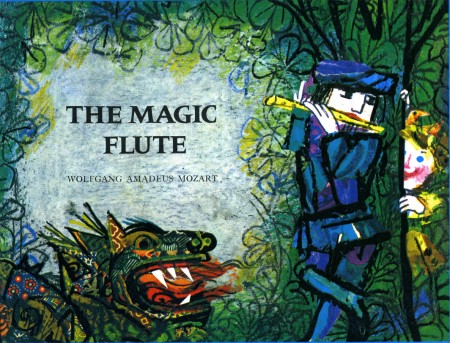
(Click any image to enlarge.)
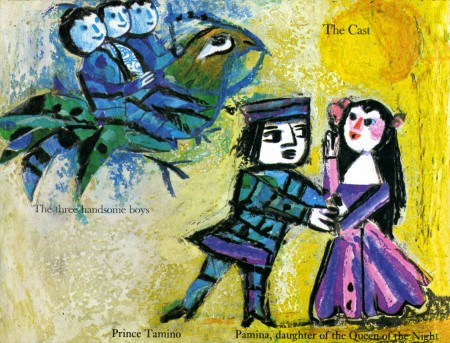 1
1
I left the type in the illustrations, though it’s a bit hard to read.
To be concluded tomorrow.
Books &Disney &Mary Blair 14 Apr 2009 08:16 am
Chouinard the Book
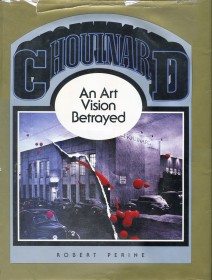 - I recently came upon an excellent book, Chouinard/An Art Vision Betrayed by Robert Perine published in 1986. This book is the history of the school that would become CalArts.
- I recently came upon an excellent book, Chouinard/An Art Vision Betrayed by Robert Perine published in 1986. This book is the history of the school that would become CalArts.
I suspect it’s more familiar to those on the West Coast than we on the other side of the continent. Regardless, the book well documents the connection between this art school and the Disney studio, particularly in the early days.
Here we’re treated to a good history of Don Graham, who led the Disney classes for Walt during the ’30s expansion movement. We also come upon students and teachers including all the famous names: Phil Dike, Virgil Partch, Hardie Gramatky, Retta Scott, Mary and Lee Blair, Ward Kimball and many others. We’re also treated to photos and artwork by these people. We also see a clear picture of the school’s founder, Nelbert Chouinard.
I’ve pulled a couple of photos and art pieces and a couple of paragraphs from the first chapter which I thought worth sharing.
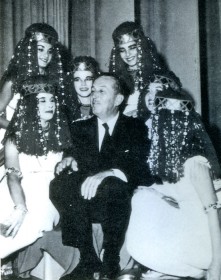 I made a deal with some of the teachers at Choulnard to come out and work with me, to sit with me by the day and know my problems. That, In turn, gave them the chance to know what we had to work on. They sat tight In the room with me; I picked Graham because he was more Life . . . figures and movement and things . . . simplification. So Graham sat with me In what we called our sweatbox. Fifty percent of my time was spent In the sweatbox going over every scene with every animator.
I made a deal with some of the teachers at Choulnard to come out and work with me, to sit with me by the day and know my problems. That, In turn, gave them the chance to know what we had to work on. They sat tight In the room with me; I picked Graham because he was more Life . . . figures and movement and things . . . simplification. So Graham sat with me In what we called our sweatbox. Fifty percent of my time was spent In the sweatbox going over every scene with every animator.
The sweatbox was an un-insulated projection room which Walt describes as “hot as the dickens,” where animators would come to sweat out Walts approval of their latest attempts. ‘They used to dread comin’ in… I’d just tear hell out of’em,” but this was all part of the learning process as both animators and studio head ____________Walt at Egyptian Ball – 1956
worked out the best solutions for making the
moving figure work. So Graham was soon a part of this process and carried Walt’s ideas back to his classroom.
Reciprocally, a bit of Graham (and Nelbert) rubbed off onto Walt as they worked together 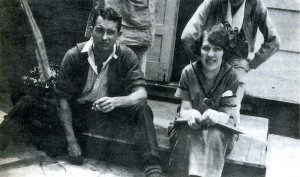 on the problems of animation. Said Walt:
on the problems of animation. Said Walt:
I set up a whole new thing (which Is) having Us effect now among the artists. We think of action. We think of drawing for action. We call It action analysis. You draw from a static figure when you’re In Life class. And your model’s sitting there. You’re draiumg the spinal column … the whole anatomy… _______Don Graham on the porch of the 8th St. School
but you don’t get any feeling of action.
So we have the model go through actions. She goes through It and then.. .sits over In the corner.. .and they sketch what they saw. What you see here (Is) not a literal copy of something. It’s.. .the Illusion you get.
Even before Walt had come to California — when he was only 19 — he had frugally photostated Muybridge’s now-famous movement photographs out of a borrowed library book, then cut them up and overlapped them in an attempt to analyze motion. But now it was a new kind of challenge — doing it with drawing. Walt further describes that challenge:
We’ve got to analyze the walk. So we would then photograph people going through actions… then we would study It. There were a lot of things I was able to get over that way. You’d have a running action. We’d draw. (It’d) be perfect because (we’d) be looking at that drawing Individually on the drawing board. (But) It doesn’t look that way; that’s what gave us stiff animation. Then we got the trick of blurting.. .In effect, elongating. When you’re moving fast Is when the action begins to take on a smoothness.. At wasn’t numbers of drawings. It’s how drawings are made.
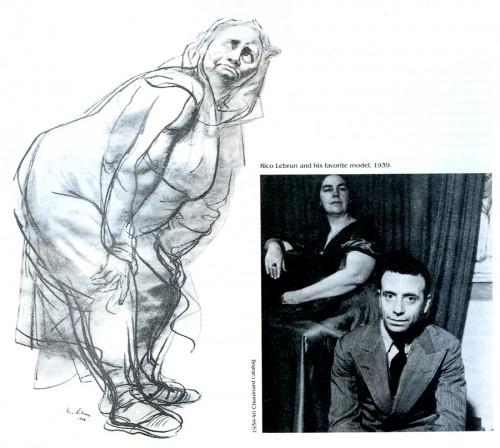
Rico LeBrun (who taught animal anatomy to the animators
at Disney during the making of Bambi) and his favorite model
-
The ideas that developed during Disney’s training period (1930-1940) were greatly aided by Don Graham. Eventually Walt hired him at Disney Studios as head of their own night school. So Nelbert’s influence and ideas were carried out into the professional world. In the animation industry alone Chouinard students and teachers like Graham, Dike, Caldwell, Davis, Gramatky, Fleury, Johnstone, Lebrun, Lee and Mary Blair, T. Hee, Plummer, and many others became important stimuli to the successful growth of the animated film.
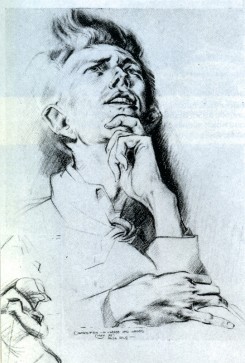
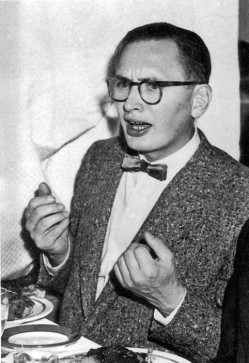
A drawing by Retta Scott | Virgil Partch at a Guild Meeting
The book is a treat. I’ll add more to this in a future post.
